Google Drive needs no special introduction. It is a household name for millions across the globe as one of the best cloud storage solutions. The cherry on top is Google Drive for Desktop application for macOS and Windows. Users can now access Drive files directly from their desktops thanks to this one-stop solution.
As we know, Google offered two syncing solutions for different sets of consumers – Backup & Sync and Drive File Stream. However, the search engine giant unifies the two solutions in a single syncing client. Google Drive for Desktop will reduce the confusion that ensued earlier regarding the services of these products. Furthermore, you will be able to save network bandwidth and disk space. One can also back up WhatsApp on Google Drive.
Google Drive For Desktop To Sync Drive Files To Desktop
There are various articles on Technorms.com that you can check for Google services.
In February 2021, Google launched Drive for Desktop. The search engine giant announced the unification of Backup & Sync and Drive File Stream to simplify the syncing services and enhance the user experience.
What Does Drive For Desktop Do?
Simply put, Drive for desktop for Windows and macOS allows users to access Google Drive files on desktop. To put it simply, Drive for desktop for Windows and macOS allows users to access Google Drive files on the desktop. What’s more, you can easily upload files to Google Drive locally using Drive to desktop.
For instance, if you have a folder named ‘ABC’ on your Drive, you can access it on your PC using the Drive for Desktop app without using a browser like Chrome or Firefox. Since this becomes a shared folder, any changes you make on your desktop will be synced automatically to the folder on your Google Drive account.
You can make Drive files available as local files using Drive for desktop, and it doesn’t consume your hard disk space. When you go online, these cached files sync back to the cloud storage, so the latest version is available on all your devices. You can also check the comparative analysis of Drive for desktop features and how they will benefit you.
However, you cannot use any Google document like Google Docs, Slides, and Sheets files on the desktop. You can access them via the desktop, but you will need a browser and an internet connection to work on these files. Also, Google Drive doesn’t sync Google Photos to the PC.
Users can also backup files and folders and migrate them to removable devices like flash drives or an external hard drive. However, you must ensure the external storage device is connected throughout the migration process. Also, migration of USB devices is not possible; that can be done only for files or folders.
Rollout Schedule
Google has allowed users the time to transition from Backup and Sync to Drive for desktop. Here are a few dates you need to keep in mind regarding the transition process.
July 19, 2021:
Backup and Sync started allowing users to transition to Google Drive for desktop through a guided flow.
August 18, 2021:
Google started sending out in-product notifications to prompt Backup and Sync users for initiating the transition. You must have received these notifications if you are using the tool.
October 1, 2021:
From October onwards, Backup and Sync will be defunct, and every user will have to compulsorily transition to Drive for desktop if he or she wants to sync Drive files to the computer.
How To Transition From Google Backup and Sync To Drive For Desktop
The process of transition is relatively straightforward. You can be assured that your data won’t be corrupted or lost while the transition process progresses. The transition process to Drive for desktop can either be done manually or automatically.
Option 1: Automatic Transition To Drive For Desktop
You will need to download and install the Drive for desktop app directly. Then, Google will ask you to review and confirm the settings for the folders on your computer you wish to backup or sync with the cloud via Backup and Sync.
Once the settings for folders on Drive are imported, Backup and Sync will be automatically uninstalled.
Option 2: How To Transition To Google Drive For Desktop Manually
We will complete this process in two stages. First, we will uninstall Backup and Sync and then proceed to install Drive for Desktop.
1. Uninstall Backup and Sync
First, we will uninstall Backup and Sync from macOS or Windows computers.
If you are a Windows user, type ‘Add or remove programs’ in the Start search bar of your PC.
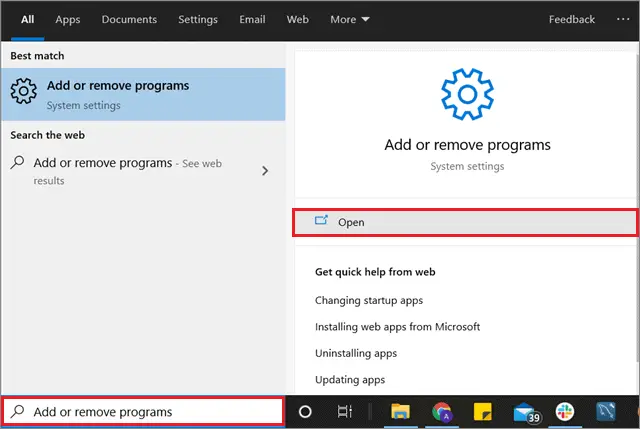
This will take you to the Apps and features window. From here, you need to select ‘Backup and Sync’ and click on Uninstall.
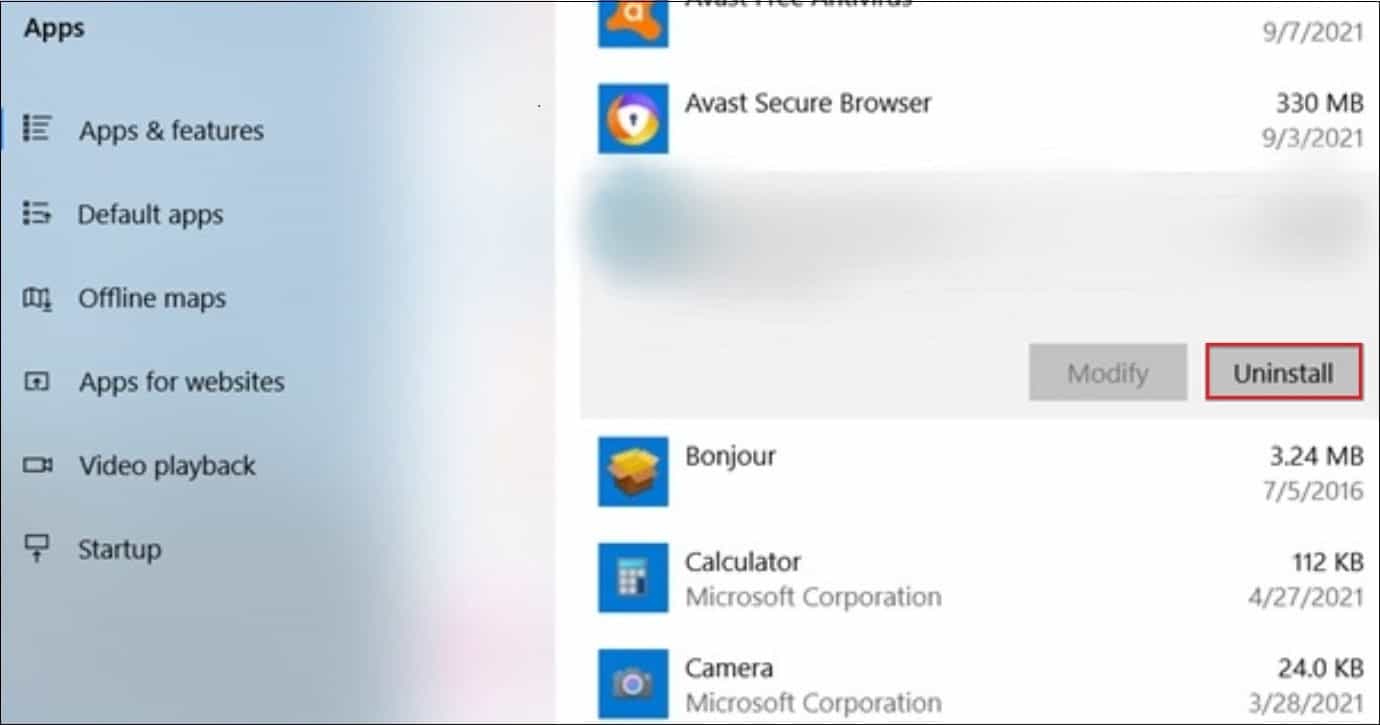
When you select Uninstall, you will receive the following message saying Backup and Sync is no longer supported. Click OK to finish the process.

If you are a Mac user, you can simply drag the app icon down to the Trash icon on the dock at the bottom of your desktop. The first stage of our transition phase is complete after you uninstall Backup and Sync from your desktop.
2. Install Drive for Desktop
Go to Drive for Desktop and download it.
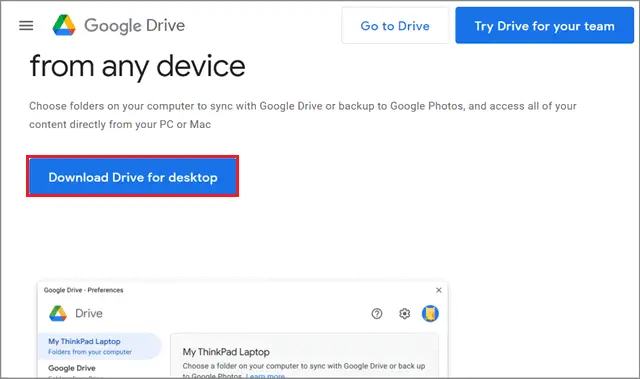
Once the download is complete, double-click on the downloaded file to start the installation. The downloaded file is named GoogleDriveSetup.exe on Windows. If you are operating macOS, the file is named GoogleDrive.dmg.
When the installation window appears, you need to select your preferences about having shortcuts on the desktop.
This is a matter of choice; you can avoid ticking the boxes if you do not want shortcuts. Finally, click on Install to start the installation process.
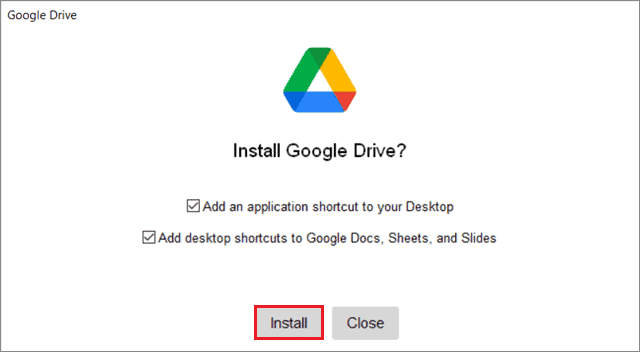
Click Close on the window after the installation is complete.
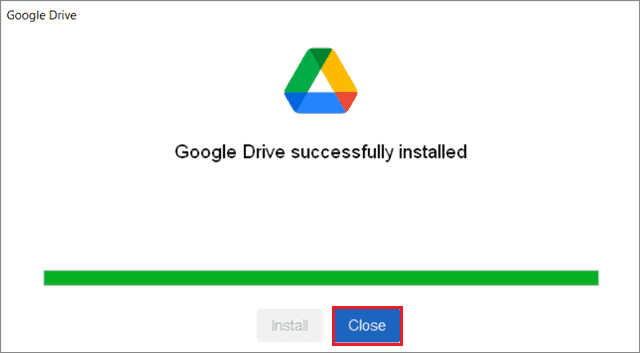
Next, Google Drive will ask you to sign in with the account that you want to sync to the computer. Click on the Sign in with browser button.
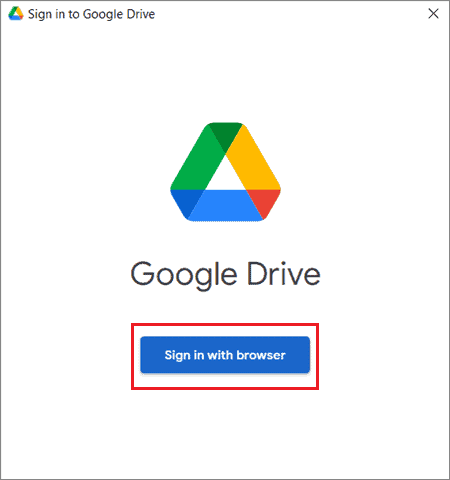
Next, choose your Google account from the Chrome browser.
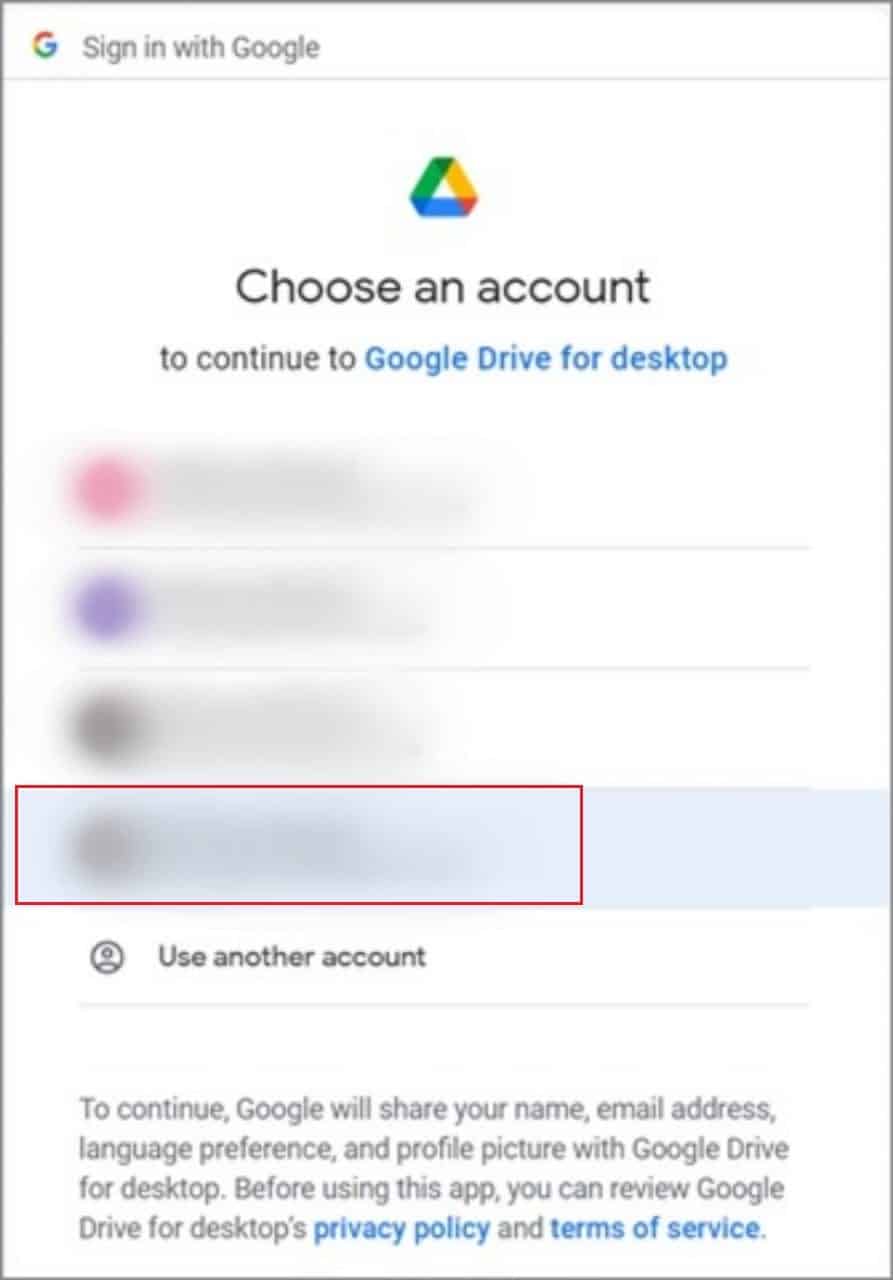
After you make a choice, Google will ask you to confirm if the Google Drive for desktop is correctly installed on your computer. Then, click on the Sign in button.
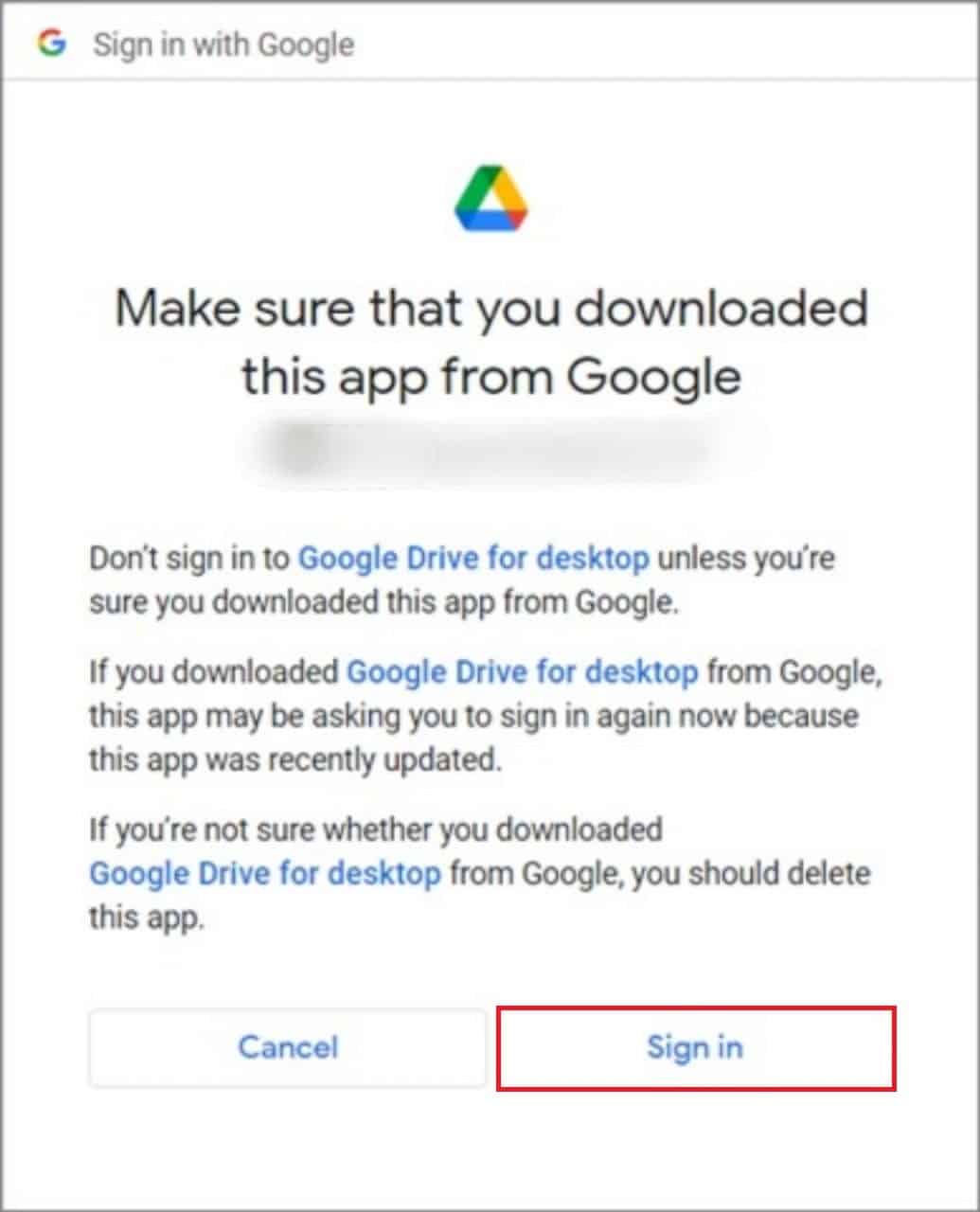
You will get a message saying that your account has been successfully synced to your PC. In addition, if you have enabled shortcuts, they will appear on the desktop.
Now, go to your desktop and double-click on the Google Drive icon to open it.
You can also access your new Google Drive locally by going to My PC. This is how the shared Drive looks if you access it via My PC.
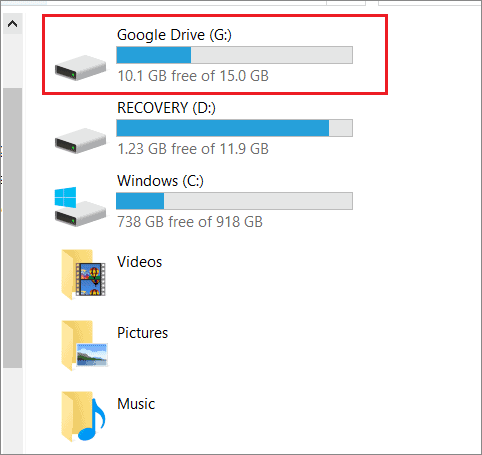
Once you open Google Drive, double-click on the My Drive option.
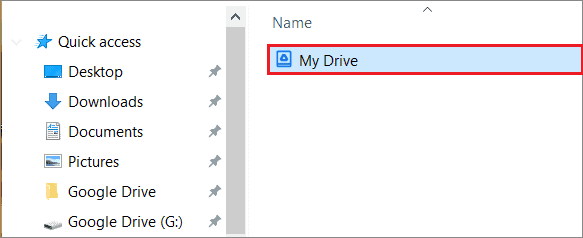
You will enter your new Drive account on the desktop. You can see all the Google Drive files once you enter the account. Now, you can directly copy and paste folders from your local drive to Google Drive without having to open the latter on the Chrome web browser.
If you had installed Backup and Sync earlier, you would see a Google Drive folder in the Windows Explorer section on the left. If you enter this folder after uninstalling the tool, you will see it is empty.
After that, if you have installed Drive for Desktop, you can see the Google Drive with a drive icon in the File Explorer section. You have to access your Drive files using the option.
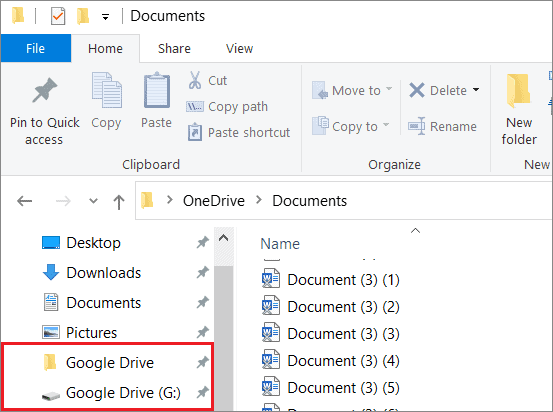
In this manner, you can differentiate between the two types of storage paths. Rest assured your data won’t be affected in any way after you have completed the transition process.
How To Sign In With Multiple Accounts
Drive for desktop allows a user to sync multiple Google Drive accounts to a PC.
If you are working on a Windows PC, go to the bottom right corner and click on the upward arrow to open the hidden icons tray. Then, select Google Drive from that list.
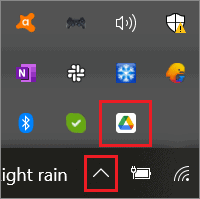
Now, click on the Gear icon to open the Drive settings. Next, choose Preferences from the drop-down menu.
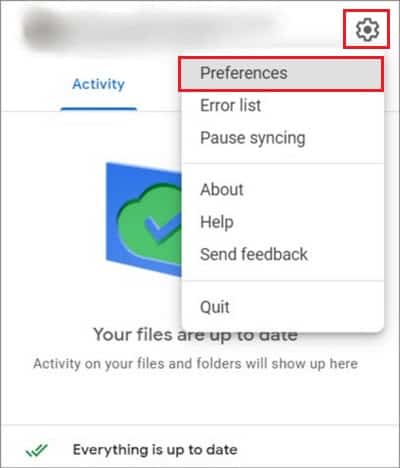
In the next window, click on the user profile in the top right corner and select Add another account.
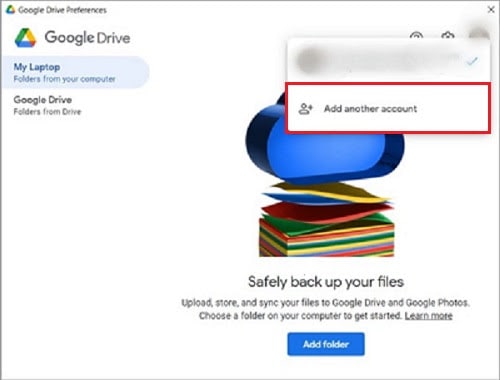
Now, you need to select the account and wait until it gets synced, similar to how you did it the first time. After the sync is complete, you can choose any one of the synced accounts as per your preferences.
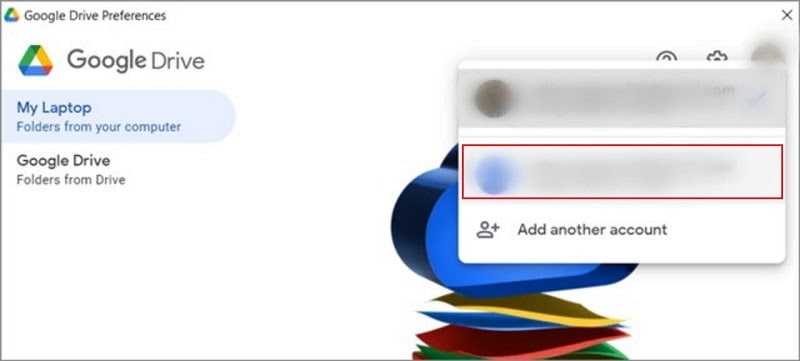
If you don’t wish to have any extra accounts, you can choose to disconnect them. Let’s see how you can do that in the next section.
How To Disconnect An Account
Select the gear icon for Settings in the Google Drive Preferences to disconnect an account from your local Google Drive.
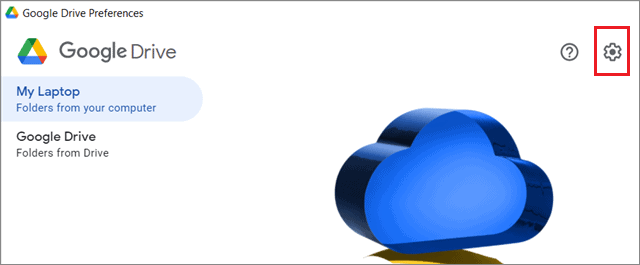
Next, click on the Disconnect account button. Before doing this, make sure you have selected the correct account to disconnect from Drive.
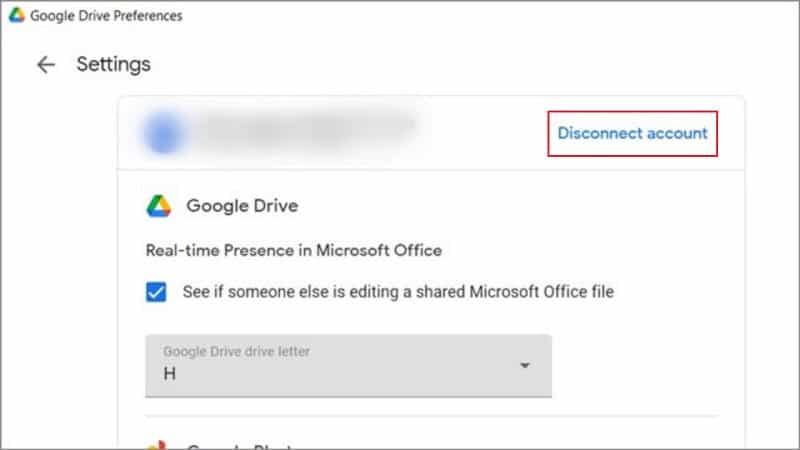
Click on Disconnect again to finalize the account.

Doing this will disconnect the account from Google Drive for desktop.
How To Uninstall Drive For Desktop
At times the screen might get stuck while you install Google Drive for desktop. In that case, you can uninstall the application and start again. Here’s how you can do it without any hassle.
To begin with, go to ‘Add or remove programs’ from the Start menu search bar.
Once you are in the Apps & features window, search for Google Drive and click on Uninstall. You will get a warning that says the app and its related info will be uninstalled.
Click on Uninstall again to confirm the action.
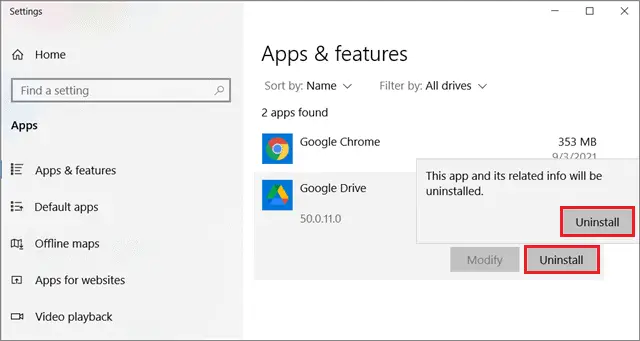
Then, you need to click on Uninstall to start the process.
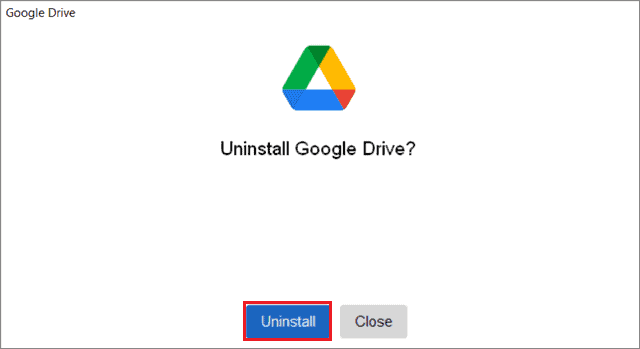
Drive for desktop will be uninstalled.
However, please note that it may not be uninstalled in some cases if Google Drive is running in the background. If you face this problem, then click on Close.
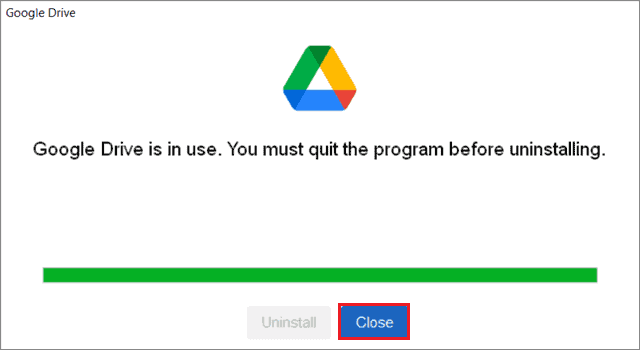
Open Task Manager from the Start menu search bar or use the Ctrl+Shift+Esc keyboard shortcut to open it.
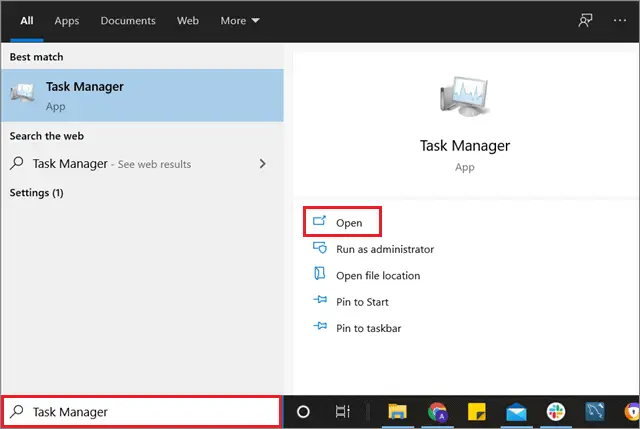
Next, select the Processes tab and locate Google Drive processes. Then, right-click on each of the tasks and choose End task from the drop-down menu.
Repeat this step for all the Google Drive processes that you see in the window.
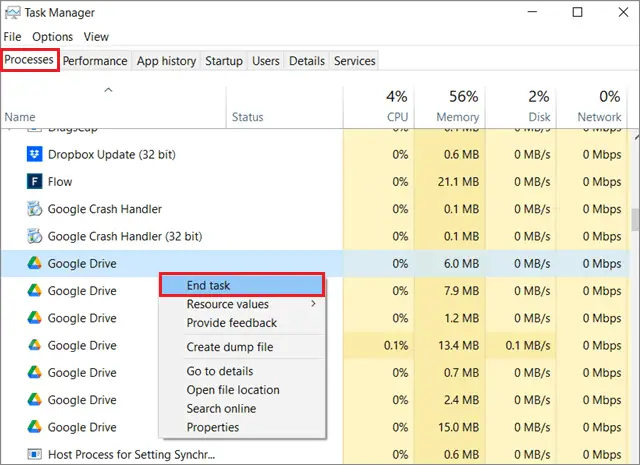
Now, repeat the Uninstall process again. Google Drive for Desktop will be successfully uninstalled from your PC this time.
Issues You Might Face With Syncing Solutions
Google introduced the Google Drive desktop app because it created confusion amongst its consumers regarding the syncing services it offered earlier.
Google Drive File Stream was built especially for entrepreneurs, while Backup & Sync was created for individual users. However, not knowing the difference between these two tools led to consumers mixing these tools up for syncing data. As a result, many Google Workspace business users used both tools, thus creating data management challenges for IT departments.
Google renamed Drive File Stream as Drive for desktop and retained the same services to tackle this issue. Next, it has amalgamated Backup & Sync with Drive for desktop to create one unified sync client for individuals and businesses.
Also, Drive for desktop doesn’t work on an Android or iOS mobile device. It is only available for desktop computers.
Final Thoughts
Google Drive allows users to save their files and folders on the cloud, thus eliminating the need to store each file and folder locally. The search engine giant also offers cloud-to-computer syncing services. These services allow users to access their files on the cloud from their desktop. Users don’t need to open a browser to access these files.
Google has come up with a one-stop solution for syncing Google Drive files to a computer. Google Drive for desktop, is an amalgamation of two syncing tools – Drive File Stream and Backup and Sync. Starting from October 2021, every Backup and Sync user will have to compulsorily transition to Drive for desktop. While a shuffle is imminent, it won’t harm or misplace any user’s files during the transition process.
FAQs
How do I transition from Backup and Sync to Google Drive for Desktop?
You can directly install Google Drive for desktop and import the folder and sync settings from Backup and Sync. You can also choose to uninstall Backup and Sync manually and then install Drive for Desktop.
Why is Google making this transition to Google Drive For Desktop necessary?
Google has decided to unify Backup and Sync and Drive File Stream solutions under one sync client, i.e., Drive for desktop. This step is being taken to reduce the confusion surrounding syncing solutions and enhance the user experience.
Will anything happen to my files when I install Drive for desktop?
No, your files won’t be affected in any manner. The Drive for desktop app is just an update on Backup and Sync and Google Drive File Stream.
How will this affect me if I am using Drive File Stream?
Drive File Stream has been renamed as Drive for Desktop. This step won’t affect your Google Drive account. You will also be able to use Backup, and Sync features in Drive for desktop.
Can I work with Google Docs, Sheets, or Slides using Drive for desktop?
You can access these shared files from your desktop, but you need an internet connection. Without the internet, you won’t be able to work on these files since they aren’t available for working offline.







